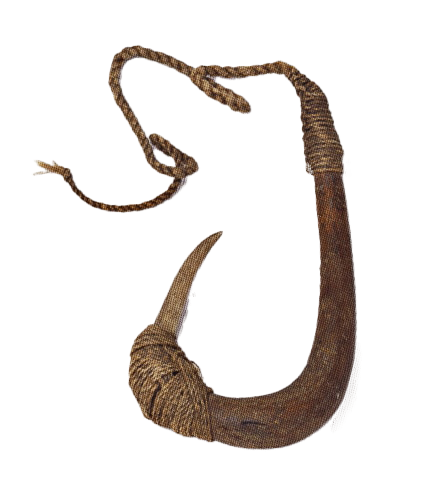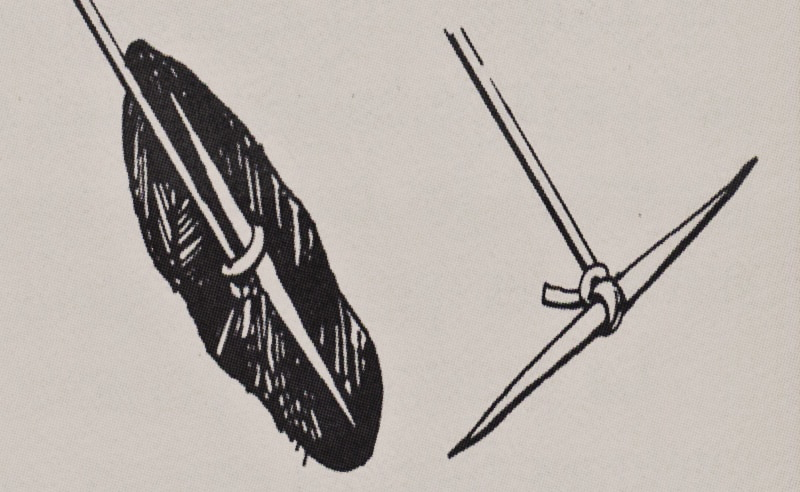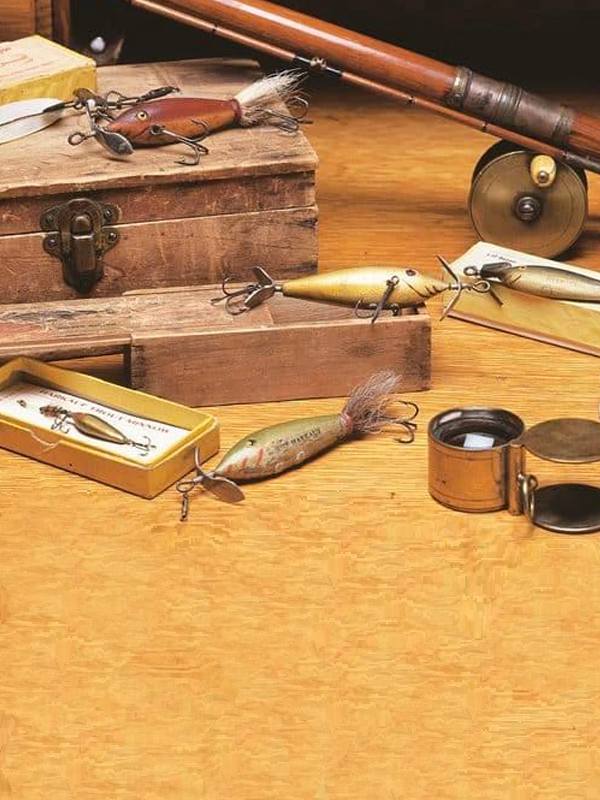
Fishing in prehistory
Fishing in prehistory

The fabulous story of the invention of the fishhook dates back to the Magdalenian era, about 15,000 years ago.
But long before the Magdalenian period, in the Paleolithic era, our oldest direct ancestors called “Cro-Magnon men”, fished or rather hunted fish with bows and arrows or with harpoons. It is indeed in the shelter known as “Cro-Magnon” which overhangs the Vézère river in Les Eyzies de Taillac, (not far from the Lascaux cave in the Périgord), that were discovered in the middle of the XIXth century, the most complete fossil remains of our species Homo sapiens, about forty thousand years old. And among the numerous bones and human skeletons discovered there, in the middle of the remains of meals containing thousands of vertebrae of salmon, eels and trout, were also discovered tens of points of harpoons or foënes out of bone, horn, hardened wood or flint, which testify that these men of Cro-Magnon ate, at certain times, in particular at the time of the migrations of the salmon or eels, as much fish as game. There is no doubt that aquatic fauna (fish, crustaceans and shellfish), much less dangerous and easier to capture, including by women and children, than terrestrial fauna, entered very early in the regular diet of prehistoric men.

Halibut hook in wood and bone used in the 19th century by the Indian tribes of British Columbia.

Mammoth bone and ivory harpoon points, found intact in sediments over twenty thousand years old. The wooden handles, on which they were fixed, have completely rotted.
The fact that most of the remains of the first ages of mankind have been found on the banks of rivers or lakes, is not due to chance or to the simple need for water supply. Harpoons and foenes, whose points are found on many lake or river sites, prove that throwing weapons were used for fish as well as for game.

On the wall of a cave in the Vézère valley, this salmon in low relief is perfectly identifiable.
It is then, during the Magdalenian period (from 16,000 to 12,000 B.C.) that the fabulous invention of the hook appears. At first, it was a simple stick made of bone or wood with two pointed ends that was placed across the fish’s throat when a pull was exerted on the string fixed in its middle. Bone, flint and especially shells were then cut and polished into rather crude, but nonetheless effective hooks. But it is obviously the Bronze Age (in the third millennium BC), which will allow the perfection of the hook, very similar to what we know today. Paradoxically, the advent of the Iron Age (which began in Europe around 800 B.C.), which was decisive in other fields, notably hunting and agriculture, did not bring about much progress in fishing techniques. Used in the water or at the water’s edge, as long as they were not tinned (a Gallic invention from the beginning of our era), iron objects and especially hooks rusted too easily. The importance of the settlements of certain lacustrian cities, makes us suspect that only the use of these devices made it possible to feed an important number of inhabitants.


Primitive hook: a simple small stick with a point at both ends, which is placed across the throat of the fish when the line is pulled.
In contrast to the plant fiber mesh, the polished stone weights have been preserved.
Nets, the remains of which are obviously less well preserved than harpoon points or hooks, nevertheless seem to have been invented very early by our ancestors. The importance of the populations of certain lakeside cities makes us suspect that only the use of these devices made it possible to feed an important number of inhabitants, in particular on large lakes like Geneva Lake. But long before the invention of nets, vestiges of traps made of hardened wood and stones were found in the bed of the river Vézère, not far from the Lascaux caves and dated back to more than thirty thousand years ago. There is no doubt that our ancestors had noticed that in spring tens of thousands of salmon were coming up from the ocean via the Dordogne and then the Vézère to go upstream to reproduce. It was then easy to guide them, in the shallow places of the river, by “barriers” made of wooden stakes hardened by fire, or of stones, to a final trap where it became easy to harpoon them or even to take them by hand.

Leads made of stones cut then polished, which were used as ballast for bottom lines or nets made of braided vegetable fibers, used more than fifteen thousand years ago.



